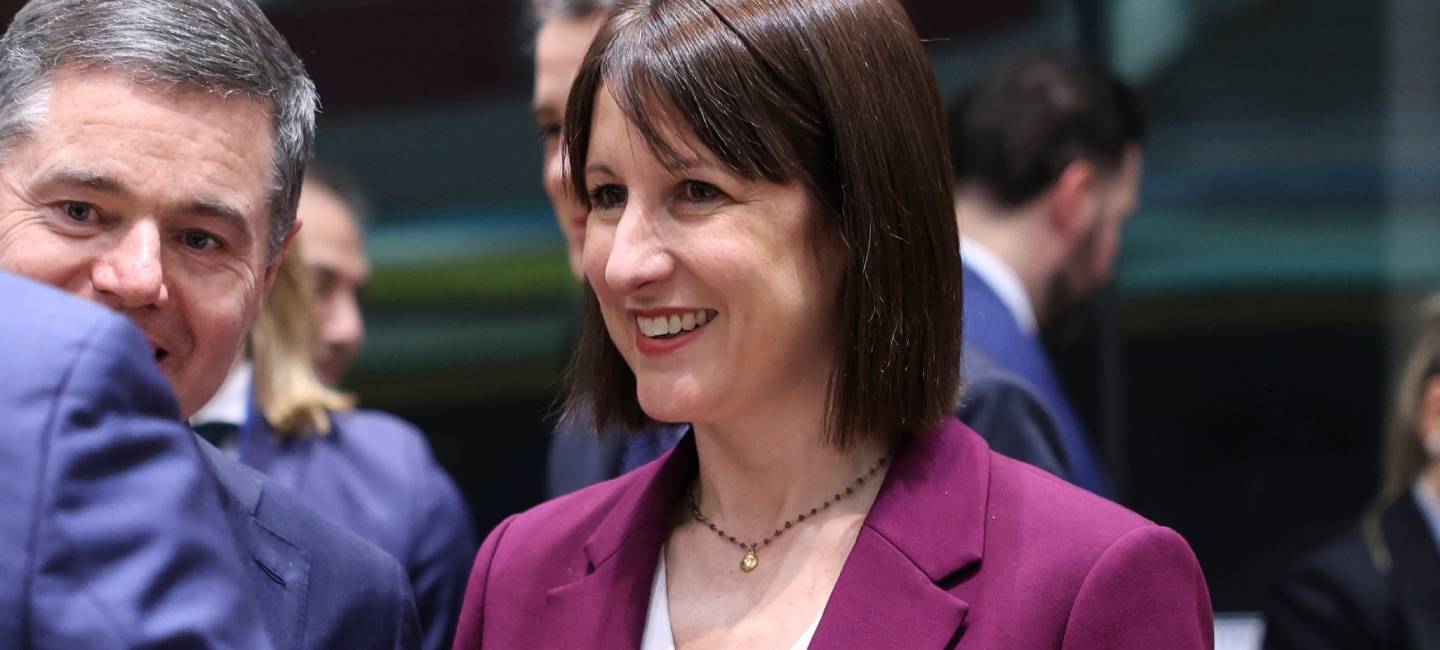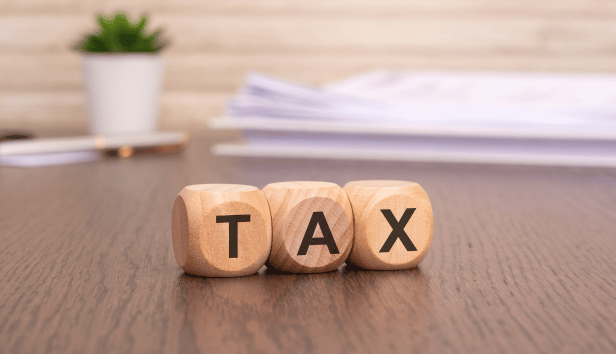

This article is for general guidance only and is not financial or professional advice. Any links are for your own information, and do not constitute any form of recommendation by Saga. You should not solely rely on this information to make any decisions, and consider seeking independent professional advice. All figures and information in this article are correct at the time of publishing, but laws, entitlements, tax treatments and allowances may change in the future.
As the UK economy continues to face challenges, there is speculation that more tax changes could be revealed during the Spring Statement. The government raises around £1,099 billion in taxes a year, but current indications are that taxes might need to rise, or spending to be cut, for the chancellor to meet her fiscal rules.
Taxes make up 89% of the public sector’s income and are needed to fund public services, with the biggest expenditure going on health, education and defence. In last year’s Autumn Budget, Chancellor Rachel Reeves announced £40 billion of tax rises and many economists believe taxes will have to rise again soon.
The government is also trying to cut costs, and has just announced plans to cut £5 billion from the welfare bill by reducing disability payments.
So, where might we see further tax rises to bring in additional revenue for the Treasury?
What’s on this page?
Chancellor Rachel Reeves set herself some ‘fiscal rules’ in October, which include a target of balancing day-to-day public spending with tax revenues (also known as running a current budget surplus, or borrowing only for investment) by 2030.
At the time, there was around £10 billion of ‘headroom’ to help her do that. But wider economic factors mean that the headroom is thought to have been wiped out, and could have been replaced by a £5bn deficit.
This is in part because of the rising cost of borrowing, which has been driven by international factors. Things have not been helped by the fact that the UK economy unexpectedly contracted by 0.1% in January, according to official figures, largely because of weakness in the manufacturing sector.
Britain's budget watchdog, the Office for Budget Responsibility, is expected to cut its 2.0% economic growth forecast for 2025 – especially since in February the Bank of England reduced its economic growth projection to 0.75%. More recently the OECD reduced its UK GDP growth estimate for 2025 to 1.4%, down 0.3% from its previous calculation.
Jason Hollands, managing director at wealth management firm Evelyn Partners, says slower than hoped-for growth in the UK economy will have a knock-on impact on how much money is raised by existing taxes. He adds that the government is also “boxed in” by Labour’s manifesto pledges not to raise income tax, National Insurance, VAT or corporation tax.
Sam Cawley, investment director at law firm Nelsons, points out that with strict fiscal rules restricting additional borrowing, funds for additional spending can only come from increased taxation. “Therefore, the government will have tough choices to make about balancing tax rises with cutting expenditure on services,” he says.
The Spring Statement on 26 March is likely to be largely an update on public finances and outlook with no major tax announcements. Rachel Reeves has previously indicated that only one Budget would be held each year, in the Autumn. But that doesn’t mean that no changes will be announced in March.
One possibility is a further extension to the freeze on most personal allowances. A freeze in allowances, combined with inflation or growth in earnings, or both, means more people end up paying tax, or paying tax at a higher rate. This is called ‘fiscal drag’ and it’s often viewed as a stealth tax.
Ammo Kambo, a financial planner at RBC Brewin Dolphin, says: “This means more people are ‘dragged’ into either paying higher levels of tax or simply paying tax because their income exceeds their allowances.”
The amount of money you can earn before paying income tax (the personal allowance) has remained at £12,570 a year since 2021 and is currently fixed at this level until April 2028. The Office for Budget Responsibility estimates that the freeze in income tax thresholds will raise over £38 billion a year by 2029-30.
Extending the threshold beyond 2028 would generate even more cash for the Treasury as more people would be drawn into a higher tax band. By 2028/29, there are expected to be 3.7 million more basic rate taxpayers and 2.7 million more higher rate taxpayers. Cawley says: “One stark example of this is where state pension increases push pensioners’ income into a tax bracket for the first time or into a higher tax bracket, increasing the overall tax they pay without any rises being announced.”
According to pension consultancy firm LCP, the new state pension is expected to rise to £12,758 a year in April 2027, exceeding the basic rate tax threshold of £12,570. Those whose only income is the state pension could end therefore be dragged into income tax.
Thresholds and allowances which could also be frozen for longer include inheritance tax and the personal savings allowance.
The inheritance tax nil-rate band has been £325,000 since 2009. That long-term freeze was mitigated by the introduction of the residence nil-rate band in 2017. It only applies to those leaving their main home to their direct descendants.
The residence nil-rate band was introduced at £100,000 and increased by £25,000 each year until reaching £175,000 in 2020. It is reduced on estates worth more than £2 million. Both the nil-rate bands have been fixed at the 2020-21 levels since then and are currently fixed up to the 2029-30 tax year.
The personal savings allowance is how much you can earn in interest (outside of an ISA) without paying tax. This has been fixed since it was introduced in 2016 at £1,000 for basic rate taxpayers or £500 for higher rate taxpayers (nil for additional rate taxpayers).
It’s not clear when, if ever, this allowance might be increased.
Further changes to inheritance tax (IHT) rules could also be on their way. We already know that from April 2027, pension pots are due to form part of a deceased person’s estate, whereas currently they are free from IHT.
This means that pension pots could be subject to IHT if the nil rate band of £325,000 has already been used up. Now there is speculation that the ‘seven-year gifting’ rule could be extended to raise more money for the Treasury. This is the rule that you can give away money in your lifetime without any IHT liability, but only if you survive at least seven years after making the gift.
The Chancellor could decide to extend the seven-year period to 10 years, given that it’s often later in life that people look to reduce inheritance tax by making gifts. The taper relief which applies if you live longer than three years but less than seven years could also come under scrutiny. A person’s nil rate band is usually applied to lifetime gifts first.
So taper relief only applies to gifts above the nil rate inheritance tax band of £325,000, and only to the portion of it above that level. But there’s a possibility that this relief could be scrapped.
Ingrid McCleave, private client lawyer and partner at DMH Stallard, explains: “If you make a gift over your nil rate band of £325,000 and survive three years, you receive a tapered relief of 20% tax deduction in the inheritance tax due, and this increases by 20% for each additional year you survive.
“Rachel Reeves may consider reducing or eliminating the taper relief on gifts above £325,000 when an individual fails to survive seven years.”
These are not the only IHT gifting allowances – for example you can give away up to £3,000 each tax year without it later being included in your estate, and additional gifts for children or grandchildren getting married or starting a civil partnership. There are also relatively generous rules on regular gifting from your income.

Another prediction is that the Chancellor will overhaul ISAs by lowering the annual allowance of £20,000 to £4,000 for cash ISAs. This has been hotly debated and it’s unclear whether it will actually happen, or whether it would be announced in the Autumn budget rather than the spring statement.
The idea behind the change in allowance is to encourage more people to invest rather than save. But Hollands at Evelyn Partners says he doesn’t think this would be a sensible move. “For many people who are unwilling to take the risk of investing, the net effect would be to narrow the options for sheltering cash savings from taxation.”
Keep in mind that any tax changes are currently only speculation and may not happen – so beware of making hasty decisions that may not be in your long-term best interests. It could be worth speaking to a tax adviser or an independent financial adviser first.
What’s more certain is that allowances are unlikely to increase any time soon. The amount you can add to your ISA each tax year hasn’t increased since 2018/19 and is currently frozen at £20,000 until 5 April 2030.
Aside from potential tax changes, the government has announced planned reductions in welfare spending to save £5 billion a year by the end of the decade. This includes reducing the eligibility for Personal Independence Payments (PIP), a disability benefit that’s claimed by more than three million people in the UK.
Louise Murphy, Senior Economist at the Resolution Foundation, said: “Around one million people are potentially at risk of losing support from tighter restrictions on PIP, while young people and those who fall ill in the future will lose support from a huge scaling back of incapacity benefits.”
These changes could have a significant impact on people who rely on PIP to manage the extra costs that come with long-term health conditions and disabilities. If you’re worried, it’s worth checking whether you could qualify for any other benefits.





Find out the pros and cons of downsizing to cut your IHT bill.

Discover 20 simple, practical steps to ensure you pay less tax on your money.



Use all your tax allowances, write a will or even book a holiday.